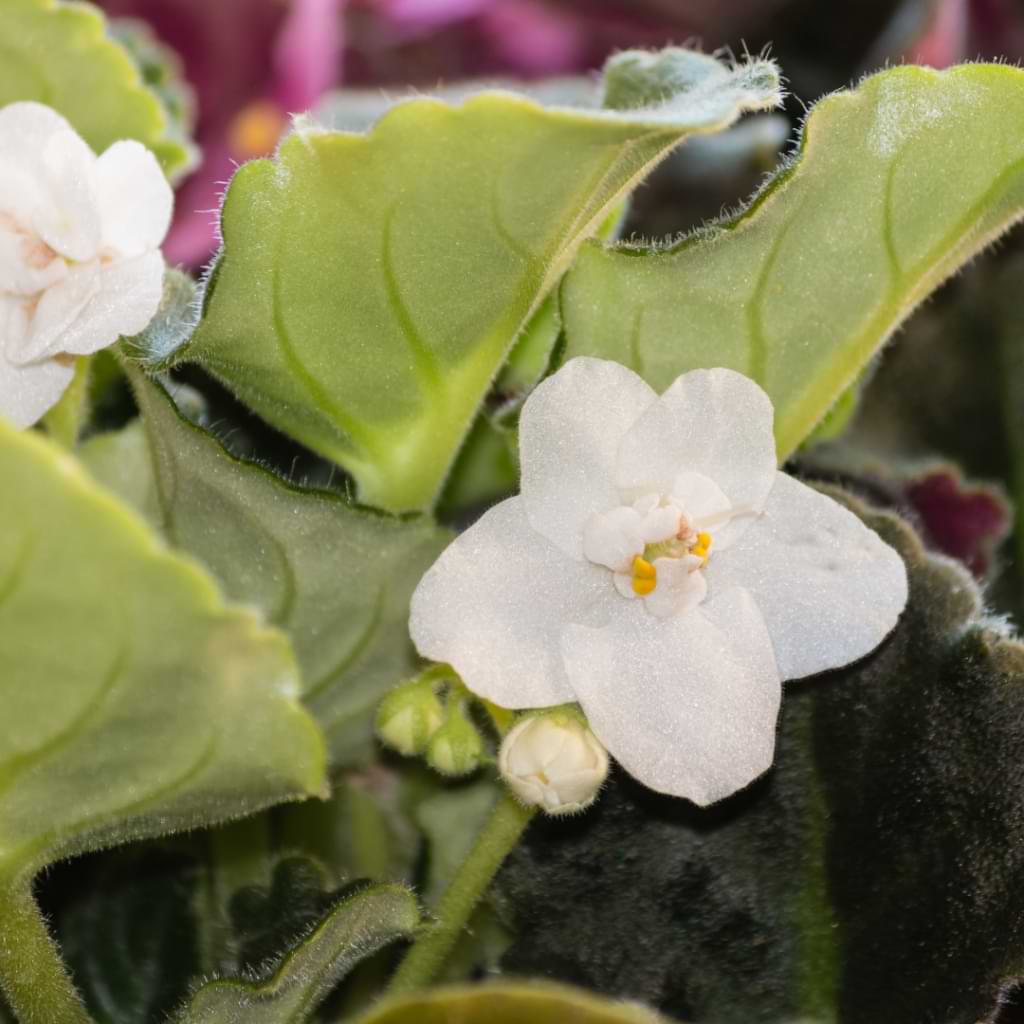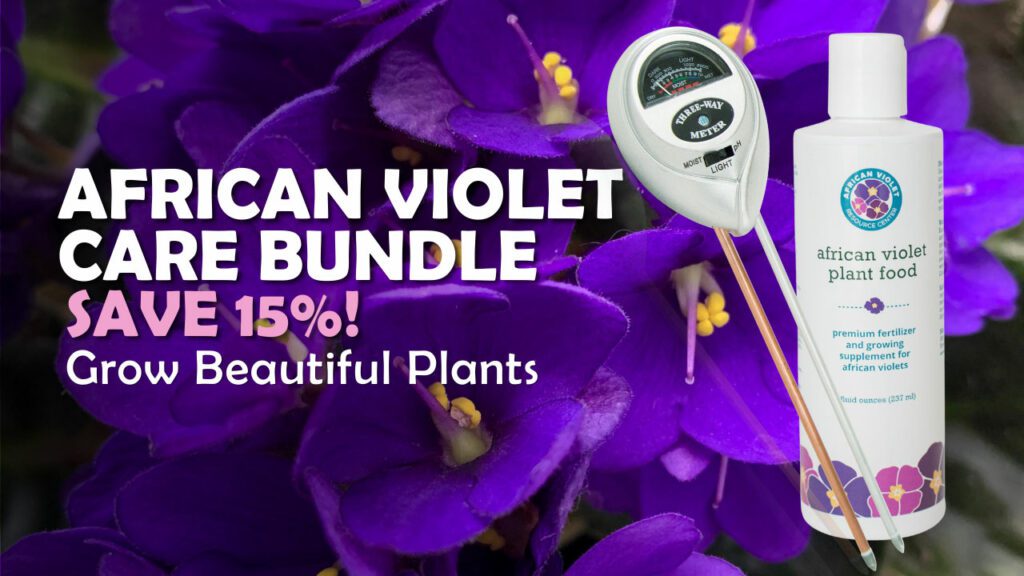African violets are the perfect plant for anyone looking to add a pop of color to their home. These eye-catching plants come in an array of colors and sizes, with some varieties having more than fifty petals per flower! But many people don’t know that there are also varieties of African violets that come in white.
White flowers are often very popular in homes, and for good reason. They are beautiful, and add brightness and happiness to any room. Having a white African violet in your home is an excellent way to instantly beautify it.
7 Types of White African Violets
There are many varieties of white African violets, and many of them have flowers that have a yellow tint or a hint of purple in the petals. These seven varieties are more commonly found and are simply stunning!
1) Diamond Tiffany
If you want a classic white African violet, then the Diamond Tiffany is the one for you. This variety has been around for decades and is still one of the most popular ones available. It has large, double blooms that are pure white in color, are slightly ruffled, and have a beautiful sheen to them. The leaves are dark green and complement the white blooms perfectly.
2) Pearl White African Violet
The Pearl White African violet is a stunning variety that has two layers of bright white flowers and deep green leaves. It is a mounding violet that grows to be about 4 inches tall and 9 inches wide, and makes a perfect side table decoration for any room in your home.
3) Gold of Scythians
The Gold of Scythians is a type of white African violet that is named after the ancient civilization that inhabited the region where it was first discovered. This violet is native to Africa and has large, beautiful blooms that are a creamy white color with golden flecks. The Gold of Scythians is a very popular type of violet among growers and collectors alike, and is sure to add a touch of elegance to any home or garden.
4) Jolly Snow White
Jolly Snow White African violets are a beautiful mini African Violet variety that have beautiful flowers. They’re able to thrive in a wide range of climates. Snow white violets are an excellent choice for both indoor and outdoor gardens, and even terrarium gardens because of their miniature size.
5) Crimson Ice
While the Crimson Ice African violet doesn’t have fully white blooms, the beauty that the white and red blooms create together got it a spot in this list. It is a hybrid of two African violets, Saintpaulia Teitensis and Saintpaulia Jonantha. The result is a plant that is both beautiful and easy to care for.
6) Rambling Moonbeam
The Rambling Moonbeam has medium green heart-shaped leaves and large white double flowers that can grow to be 2 inches wide. It is a trailing semi miniature African violet that has plenty of brightness to bring to your space.
7) Golden Eye
Golden Eye is a hybrid between two species of Saintpaulia, S. Jonantha and S. Pygmaea. The flowers of Golden Eye are white with a yellow center, and the leaves are variegated with green and yellow.

White African Violets Guide
African violets are a bit different from other popular houseplants, but their beauty is what makes them a very popular choice for many homes. White African violets are a unique type of African violet, and the only thing that differentiates them from other African violets is their color. They fall under the same size categories as other African violets, and behave in similar fashions when it comes to their seasonality and lifespan as well.
Height and Spread
White African violets (and African violets in general) are categorized into a few different size categories that determine their height and spread.
Miniature: This size African violet is 6 inches or less in height and spread, and usually has flowers that are half an inch in diameter.
Semi-miniature: This range includes African violets that are 6-8 inches in height and spread with flowers sometimes growing to ¾ of an inch in diameter, sometimes more.
Standard: Standard African violets are between 8-16 inches in height and spread. Their flowers can range from one to two inches in diameter.
Large: Large African violets are over 16 inches in height and spread. They have the largest flowers of all, and are the perfect showy African violet size.
Seasonality and Lifespan
The average lifespan of a white African violet is 5-10 years, although some plants have been known to live for much longer with proper care. In their natural habitat, African violets can live for 50 years, sometimes even longer.
Many people have been able to keep their African violets alive in their homes for decades! As long as the plant is well taken care of, fertilized and watered regularly, and is getting enough light, it can live for a very long time.
Foliage and Blooms
Some White African violets have medium, glossy leaves, while others have small, delicate ones. Some have medium-sized, showy, or even ruffled flowers, while others have smaller, more delicate blooms. Either way, the foliage on African violets can range from light green to very dark green, and some varieties even have variegated leaves!
The blooms on an African violet range depending on the size of the plant itself. Some varieties of African violets will have just a few blooms, while others will have bountiful blooms that nearly take over the entire plant. The blooms may be one solid color, multi-colored, variegated, or ruffled, and depending on the variety, there will either be a single layer of flower petals or a double layer of petals.
Do White Violets Spread
There are several different types of white African violets, and they can spread differently depending on the type. Some white African violets will readily spread and fill in an area, while others may not spread as much. Depending on the variety you have, your African violet will either mound or trail.
A mounding African violet will typically fill its pot and mound at the top, creating an almost dome-like shape with its foliage and flowers. A trailing African violet will send the flowers out beyond the dome shape to trail down the pot. Both types of violets are beautiful.
How to Care For White African Violets
In order to get the most out of these wonderful plants, you have to provide them with the right care. White African violets are easy to care for and make great houseplants. To give your African violet the best care possible, keep a few things in mind, and use some of the tips below to get beautiful blooms year-round.
Where to place your African Violet
African violets prefer bright, indirect sunlight. So, a south- or east-facing windowsill is ideal. They also like consistent temperatures, so try to avoid placing them near heating vents or fireplaces. Finally, make sure the location you choose has good airflow to prevent the leaves from getting too wet and developing fungal diseases.
Soil Requirements
Give your African violet the right soil, and it will be happy for a long time! African violets prefer well-drained, slightly acidic soil. Using a pre-mixed African violet potting soil will give you the best results and the most blooms! You can also make your own potting mix by combining 1 part vermiculite, 1 part perlite, and two parts peat moss or coco coir.
Light Requirements
African violets prefer bright, indirect light but can tolerate low light conditions. If you notice that your plant is not blooming as often as it should, it is either not getting enough sunlight or it’s getting too much. African violets need a certain amount of dark time to trigger new blooms. If the leaves are turning yellow, it may be getting too much direct sunlight. Move it to a location with indirect sunlight only to allow it to recover.
Water Requirements
Water your white African violet when the soil is dry to the touch. Be careful not to overwater, as this can lead to root rot. Using a moisture meter will ensure your African violet doesn’t get too much water.
Fertilizing Requirements
Feed your African violet with a high-quality food that is specially formulated to give your plant everything it needs. This African violet plant food is designed to be given to your plant every time you water it, ensuring you’re giving your African violet all the nutrients in low doses as opposed to all at once like regular fertilizers do.
Pruning
Pruning the African violet is a simple process that should be done every few weeks. The goal of pruning is to remove any dead or dying leaves, as well as any that are damaged or discolored. This will help the plant to focus its energy on new growth, and will also keep the plant looking its best.
To prune the African violet, simply snip off any leaves that are not healthy. Be sure to use sharp scissors or shears, and take care not to damage the remaining leaves. After pruning, it is important to fertilize the plant to encourage new growth. If you use an every-day plant food, just water like normal with the plant food of your choice.
By following these simple tips, you can keep your white African violet healthy and beautiful for years to come!
Are White Violets Toxic?
African violets are non-toxic plants. However, some varieties can cause blockages or other intestinal issues if ingested. If you have any concerns about the safety of a particular plant, it is always best to consult with a healthcare professional or poison control center.
FAQs African Violets
What is the rarest African violet?
The Chimera African violet is one of the most rare African violet varieties. This variety cannot be propagated by stem cuttings, making it more difficult to reproduce. Each Chimera is a unique plant, and none of them will be identical to their parent plant. They can only be propagated by the suckers that grow near the root of the plant.
Join the African Violet Club!
Whether you’re just starting out or are a seasoned grower, African Violet Resource Center has everything you need to help your plant grow vibrant and strong. Explore our other articles, visit our online shop, and connect with other houseplant lovers in our Facebook group to learn everything you need to know about this rewarding hobby!
More Great African Violet Resources
How to Grow Trailing African Violets
African Violet Potting Soil pH Guide
6 Reasons Your African Violet Won’t Bloom and How to Fix Them







